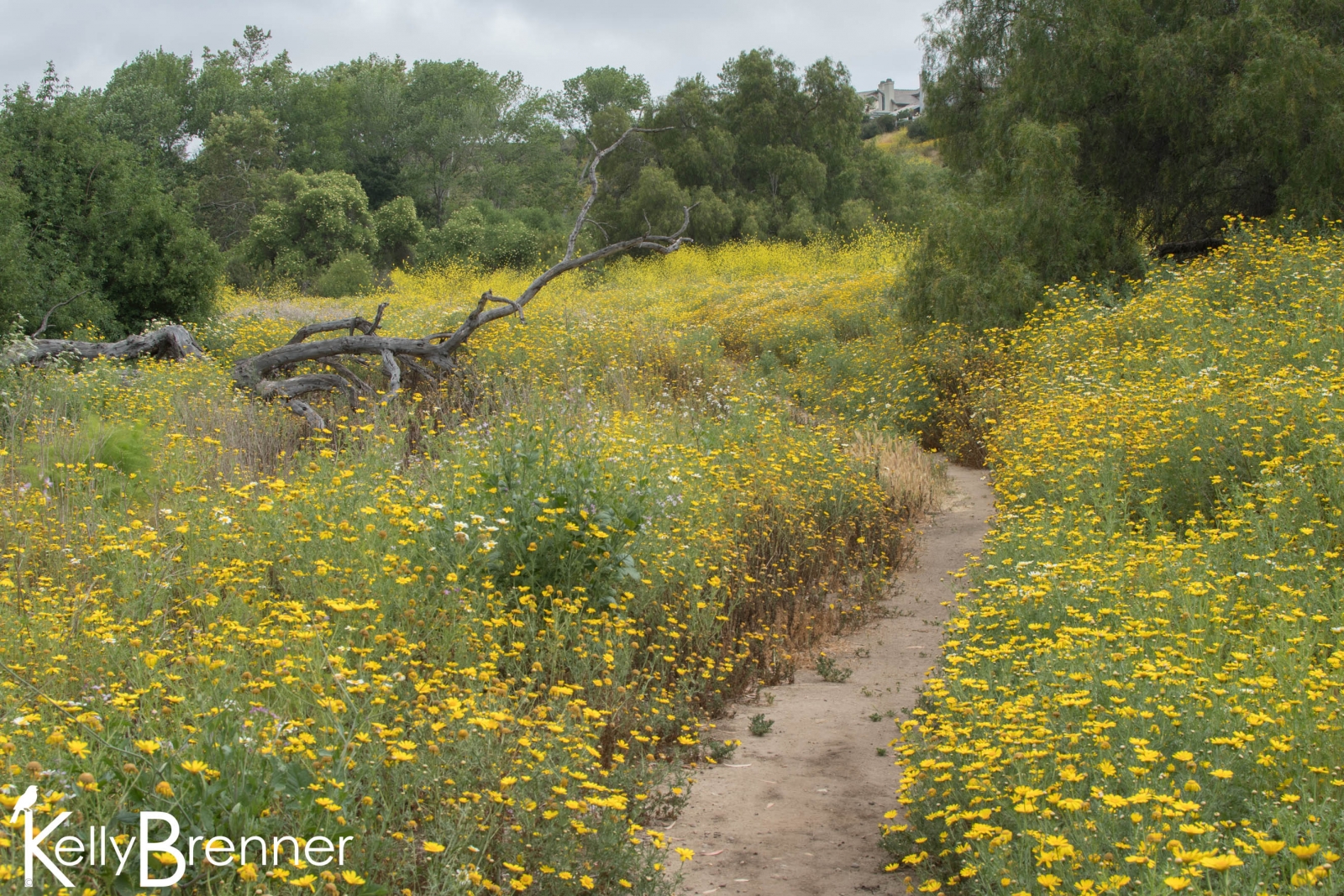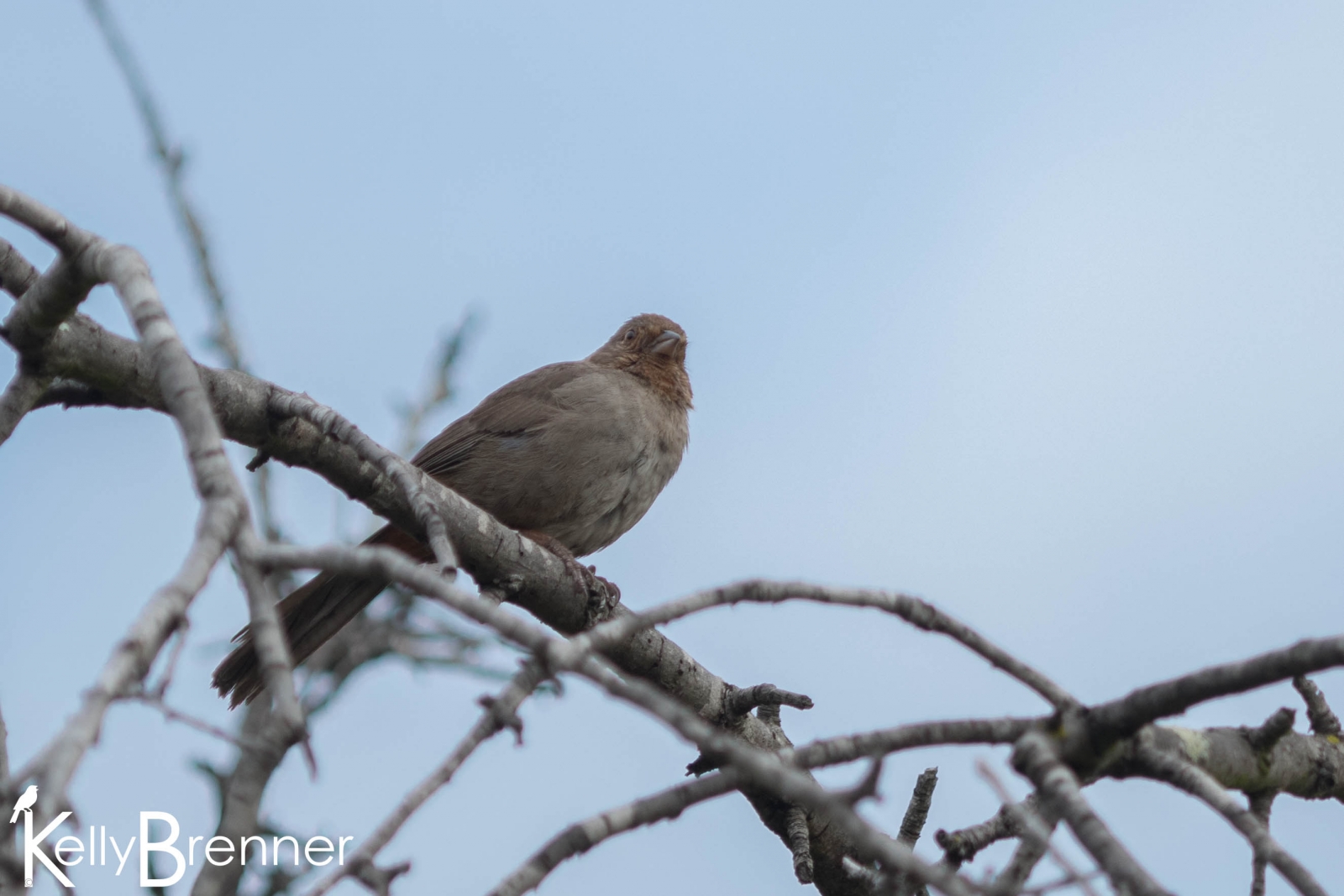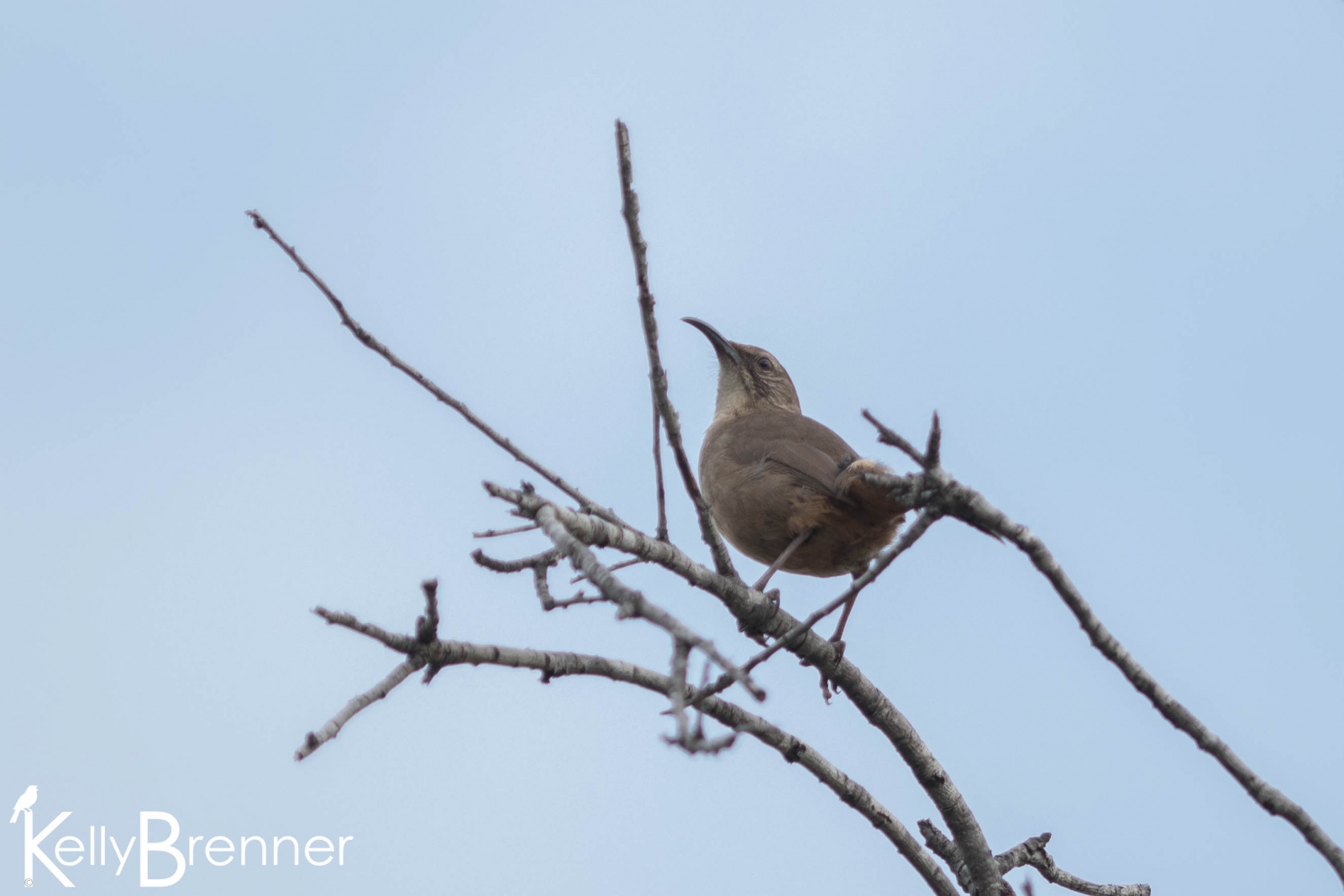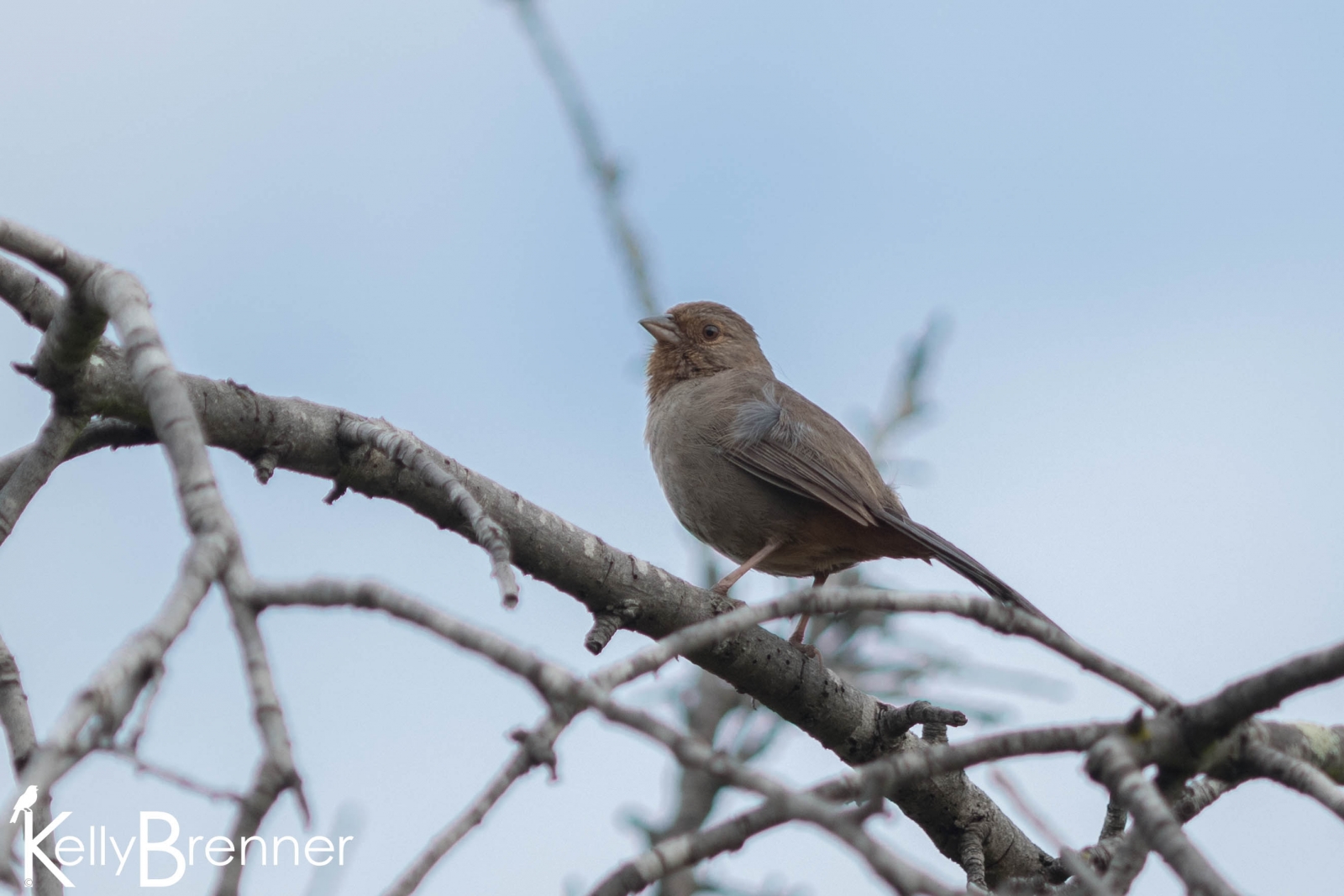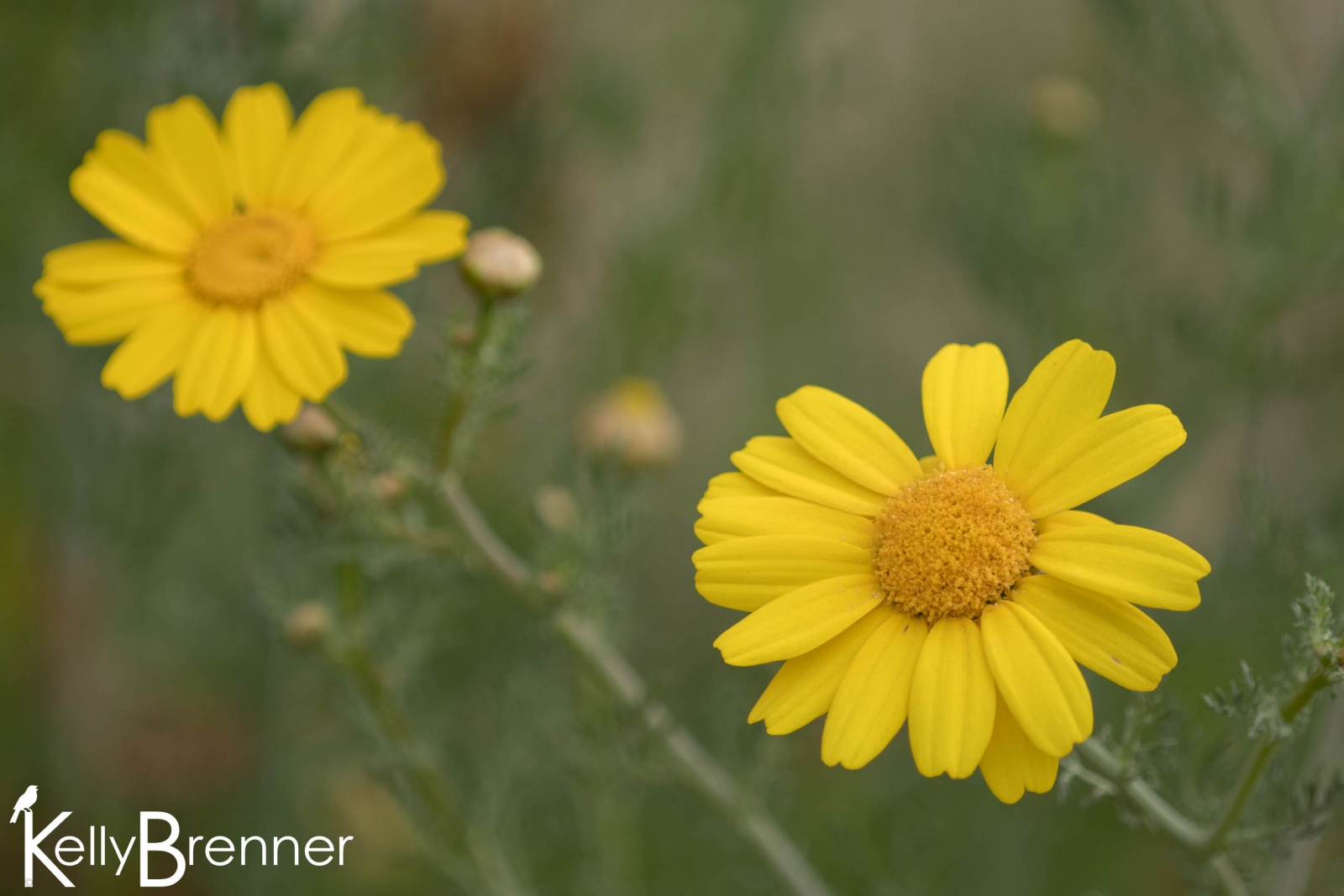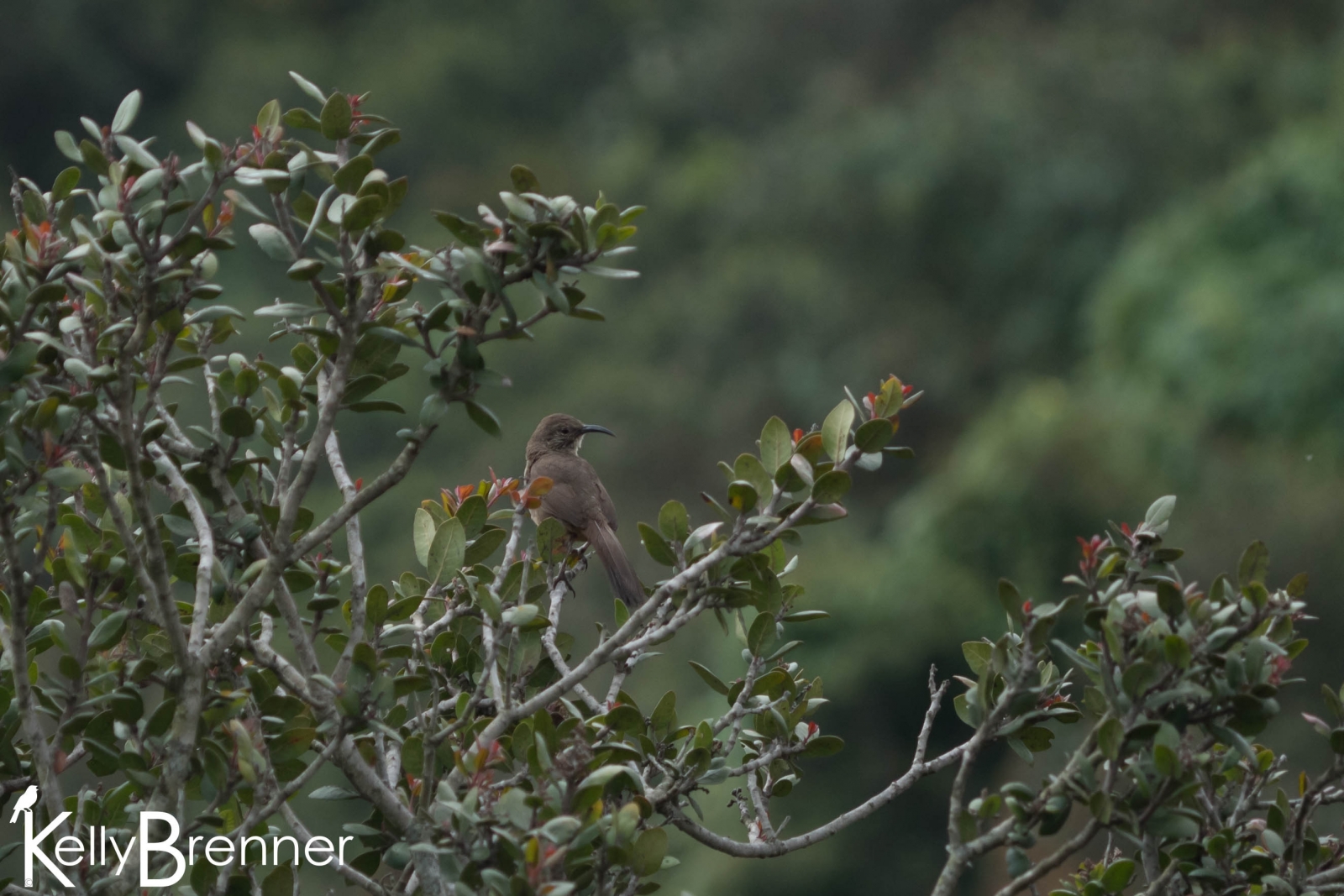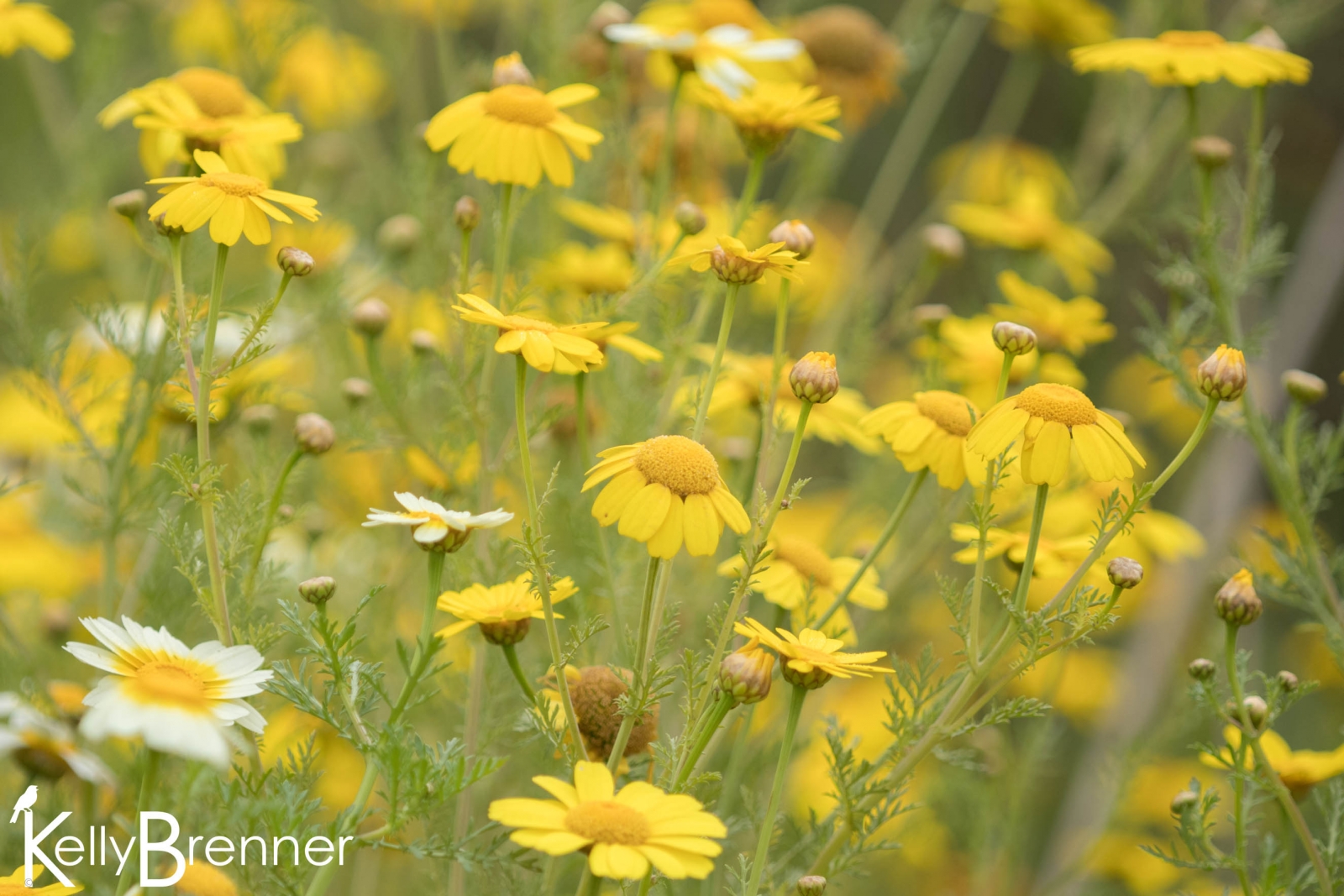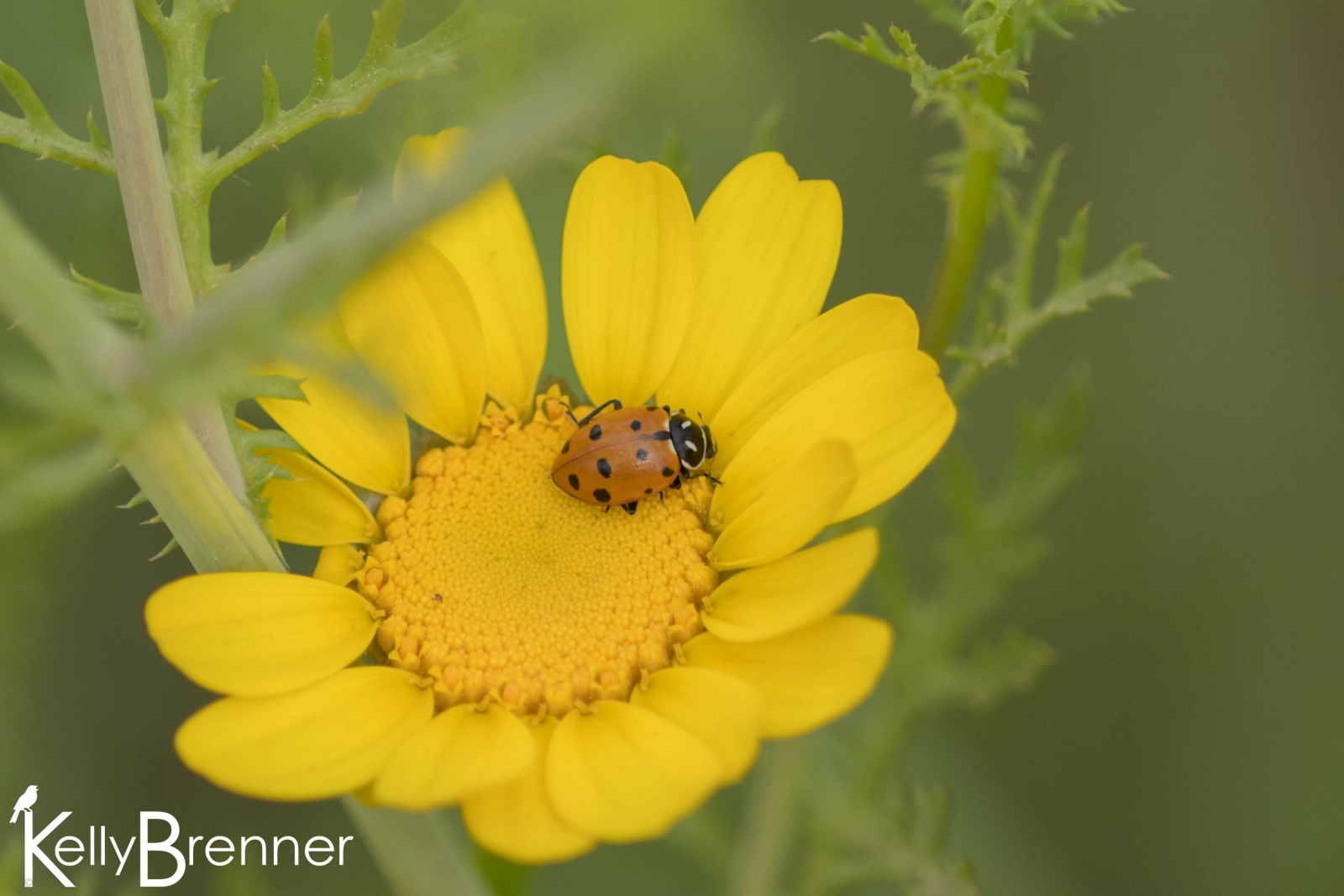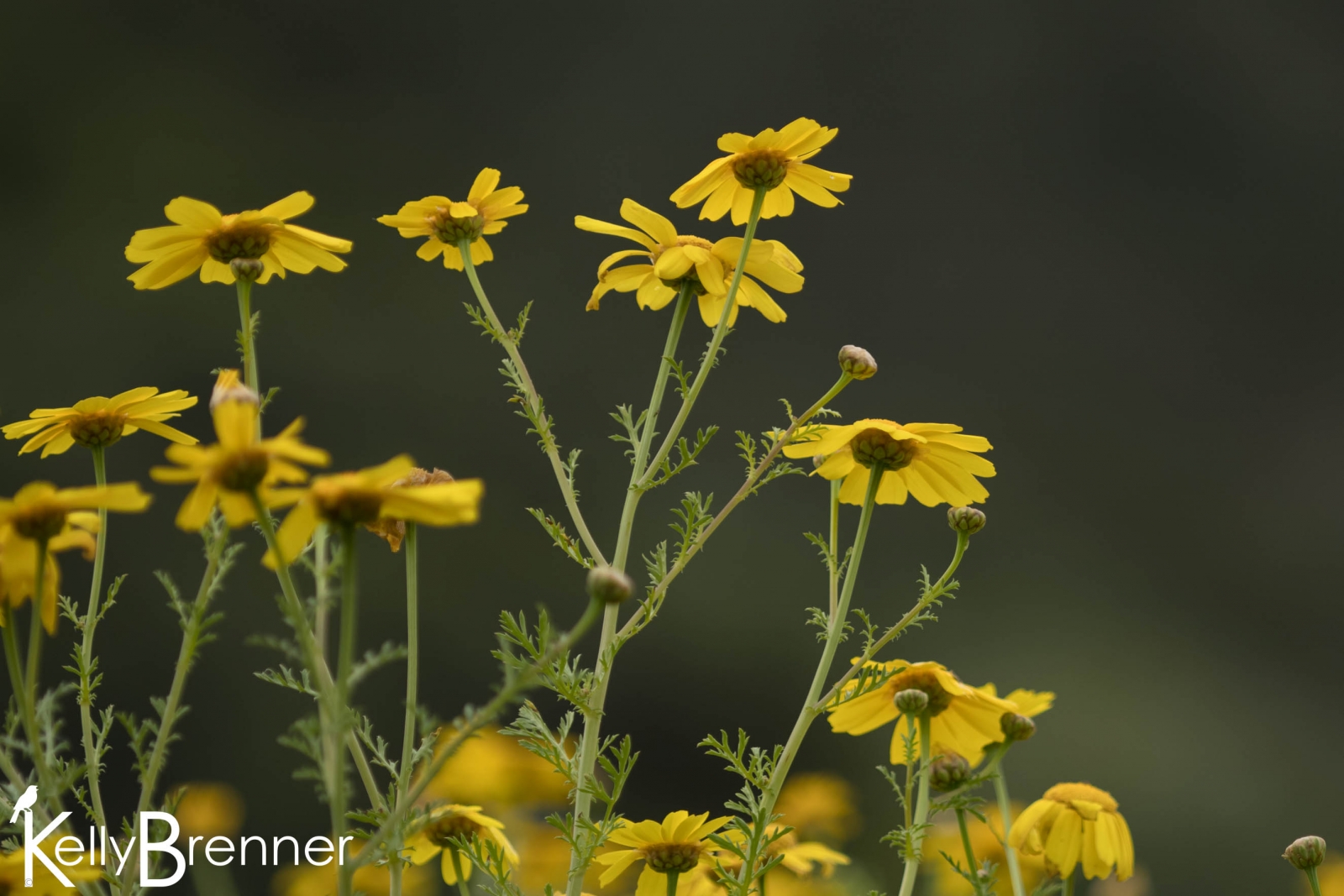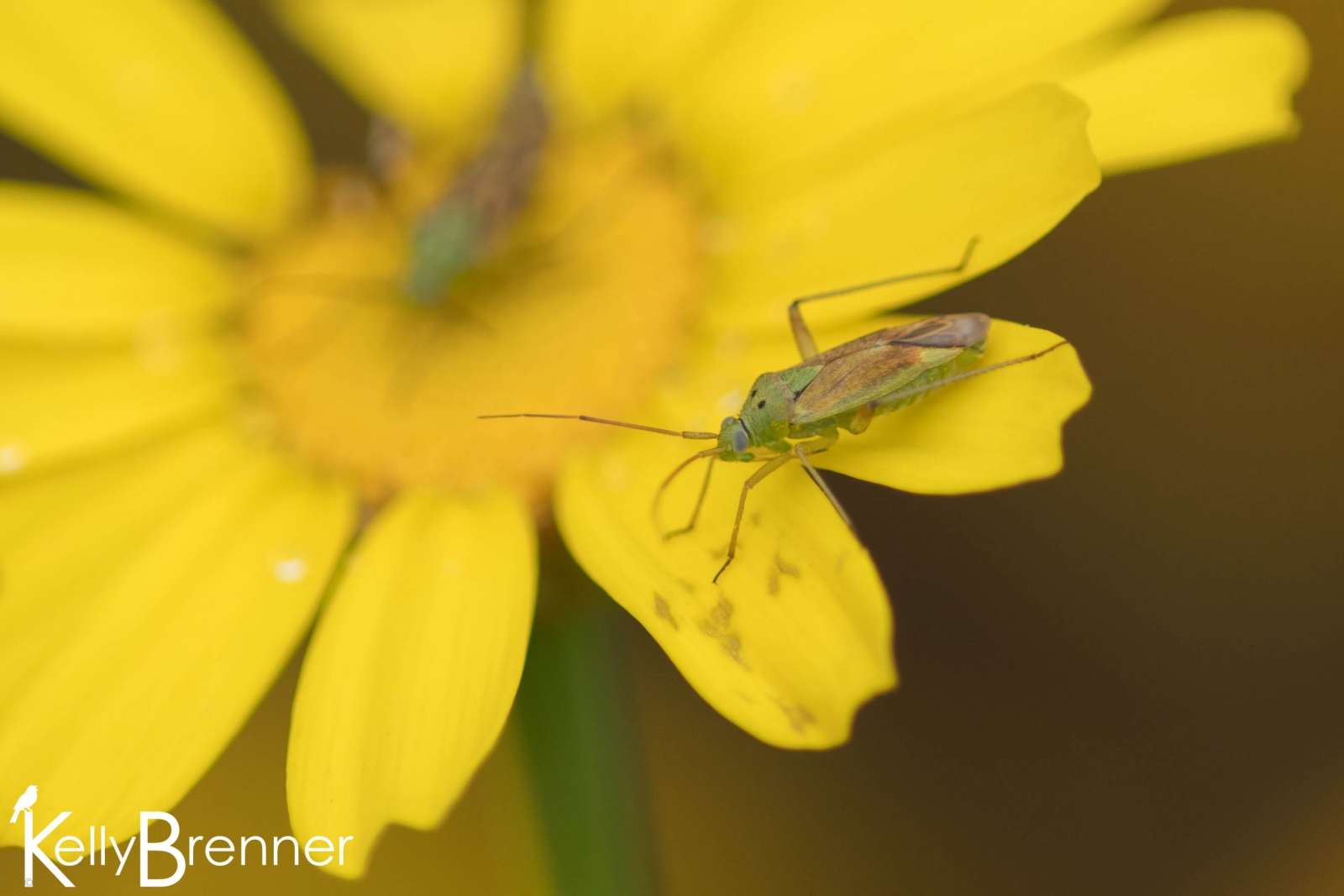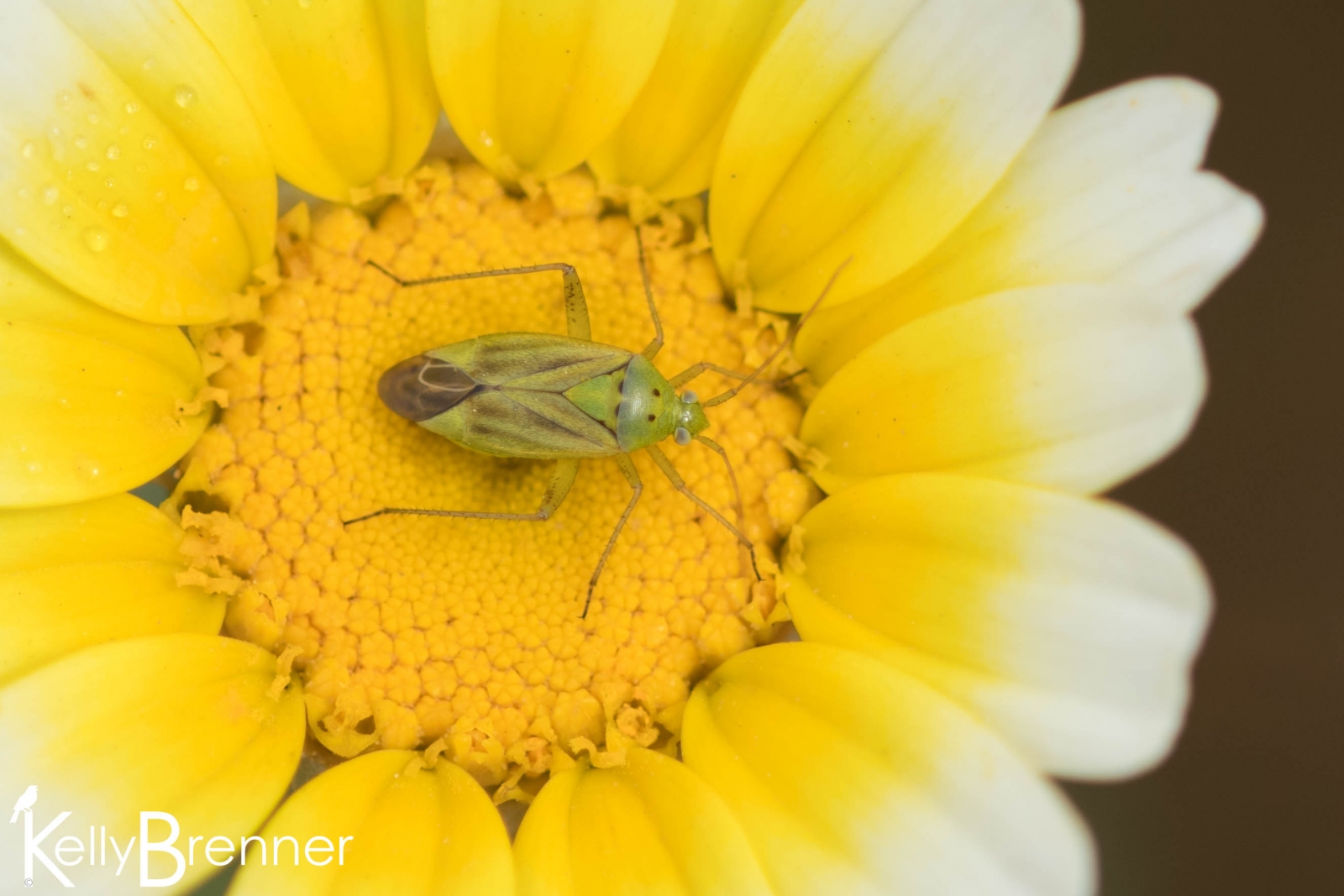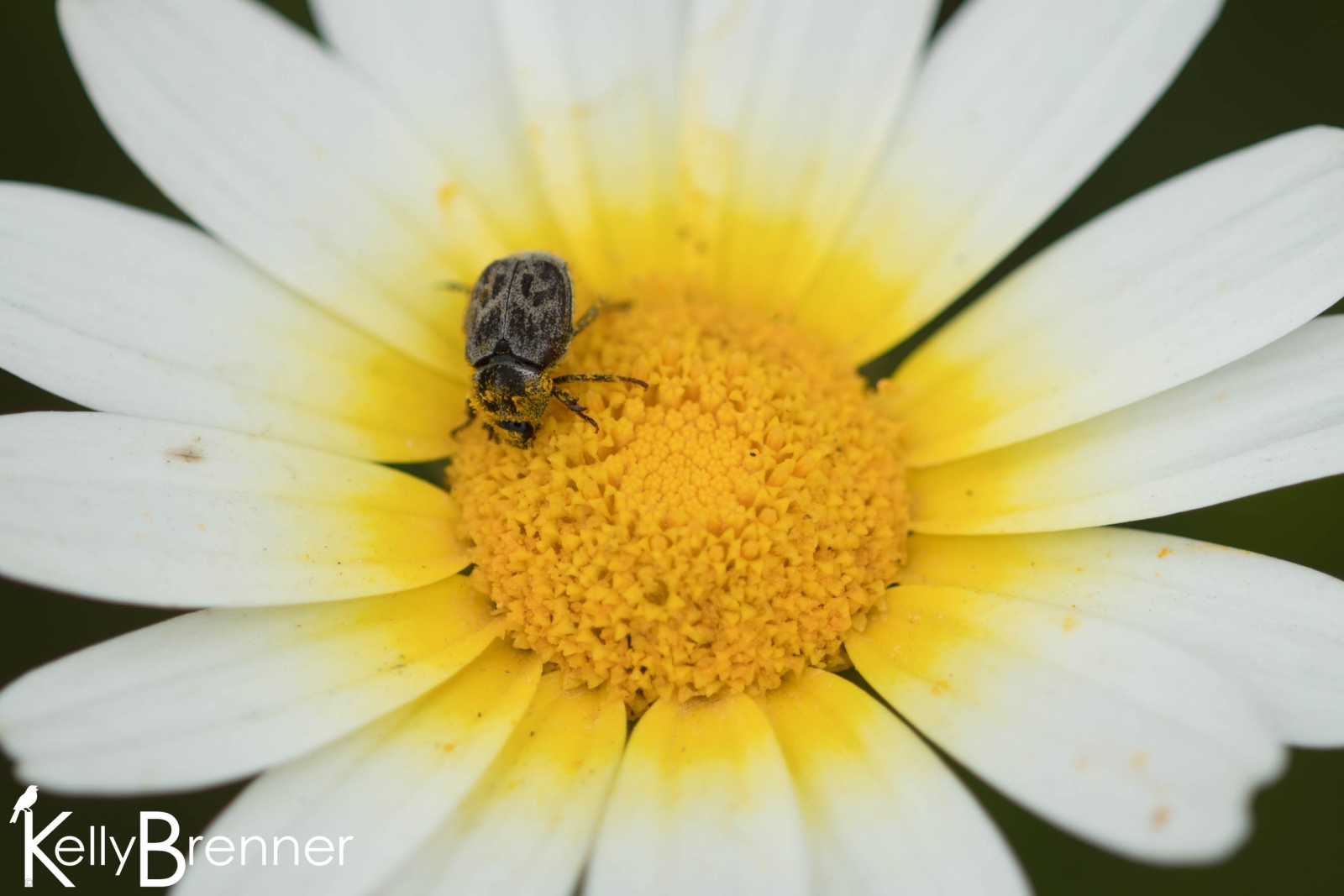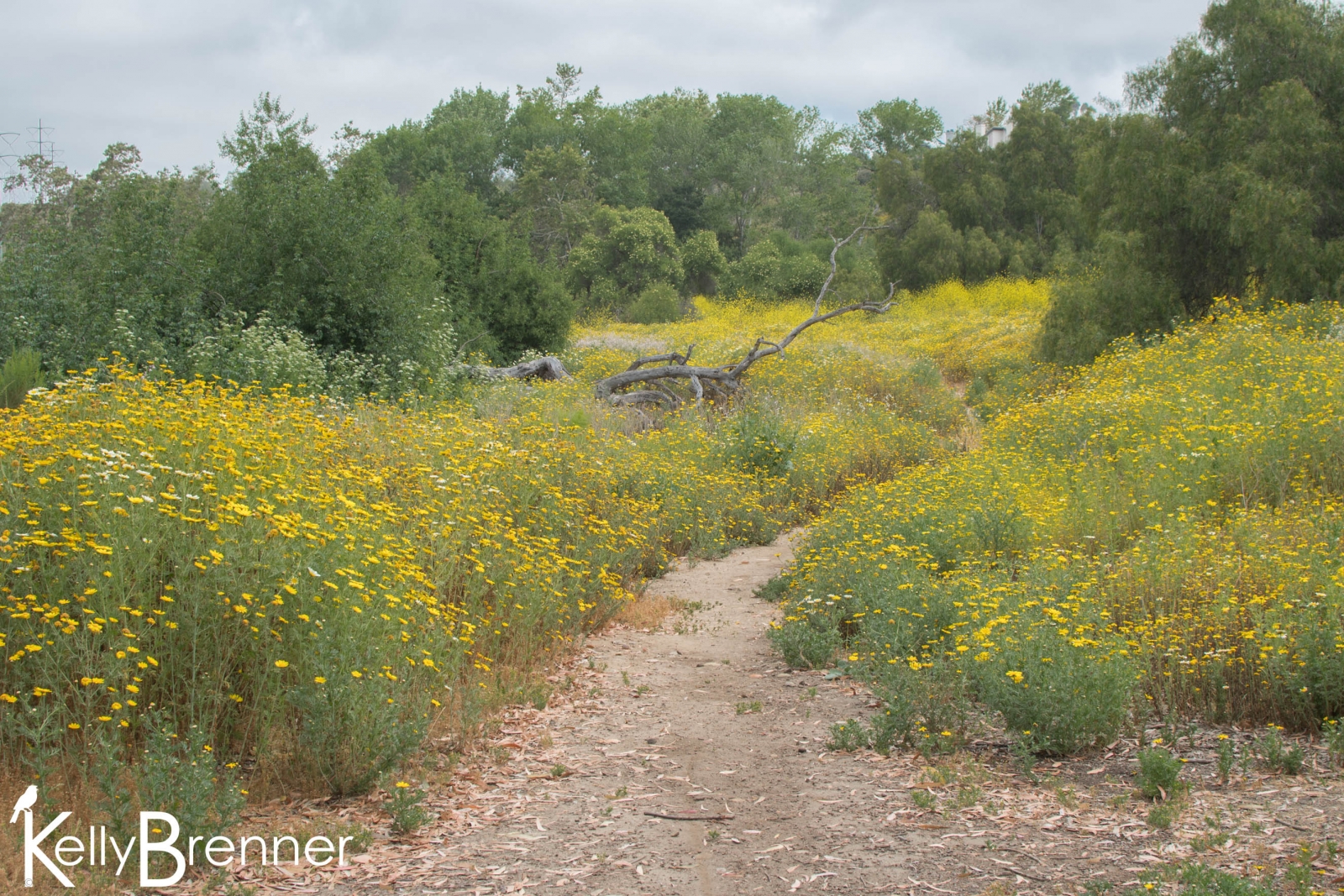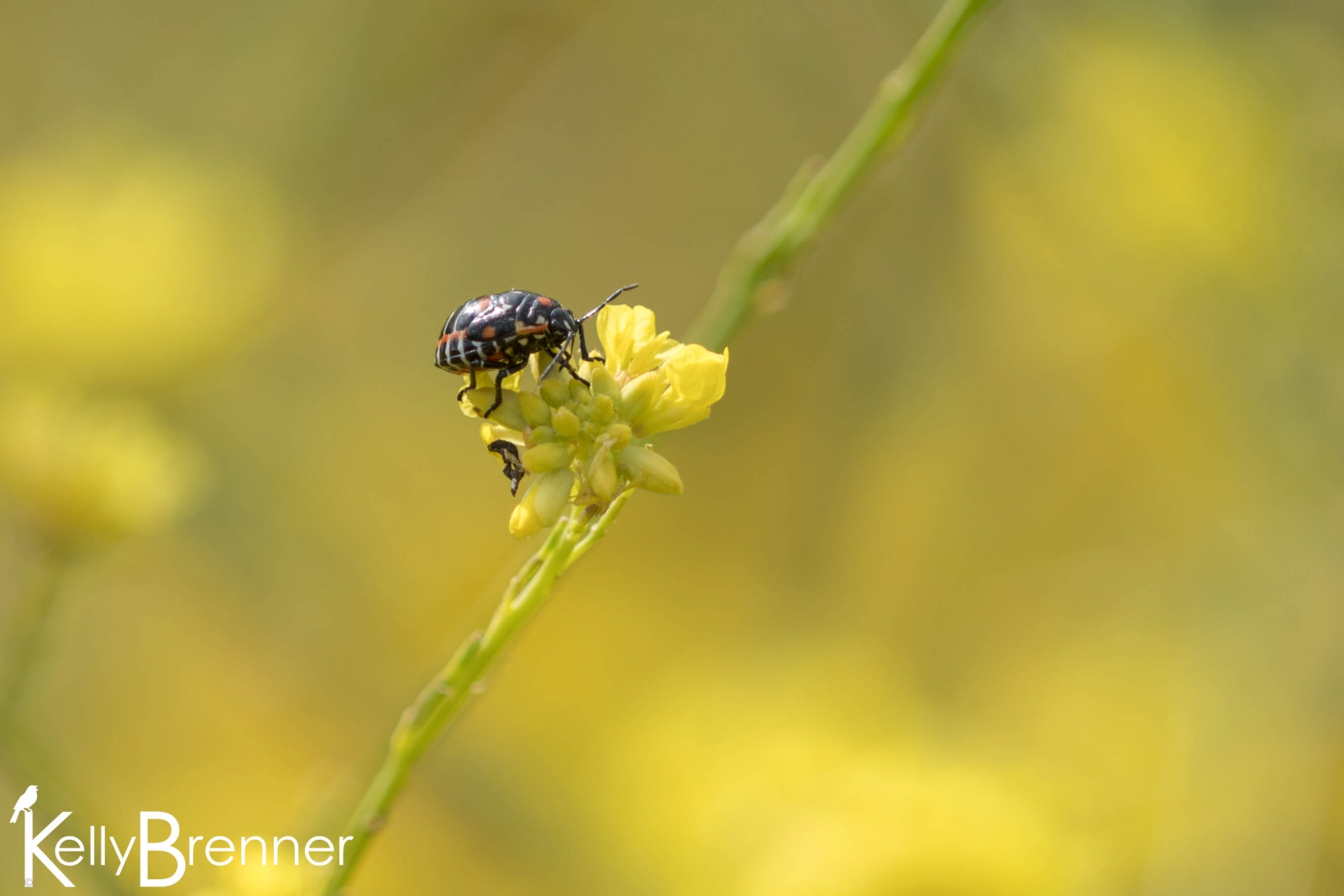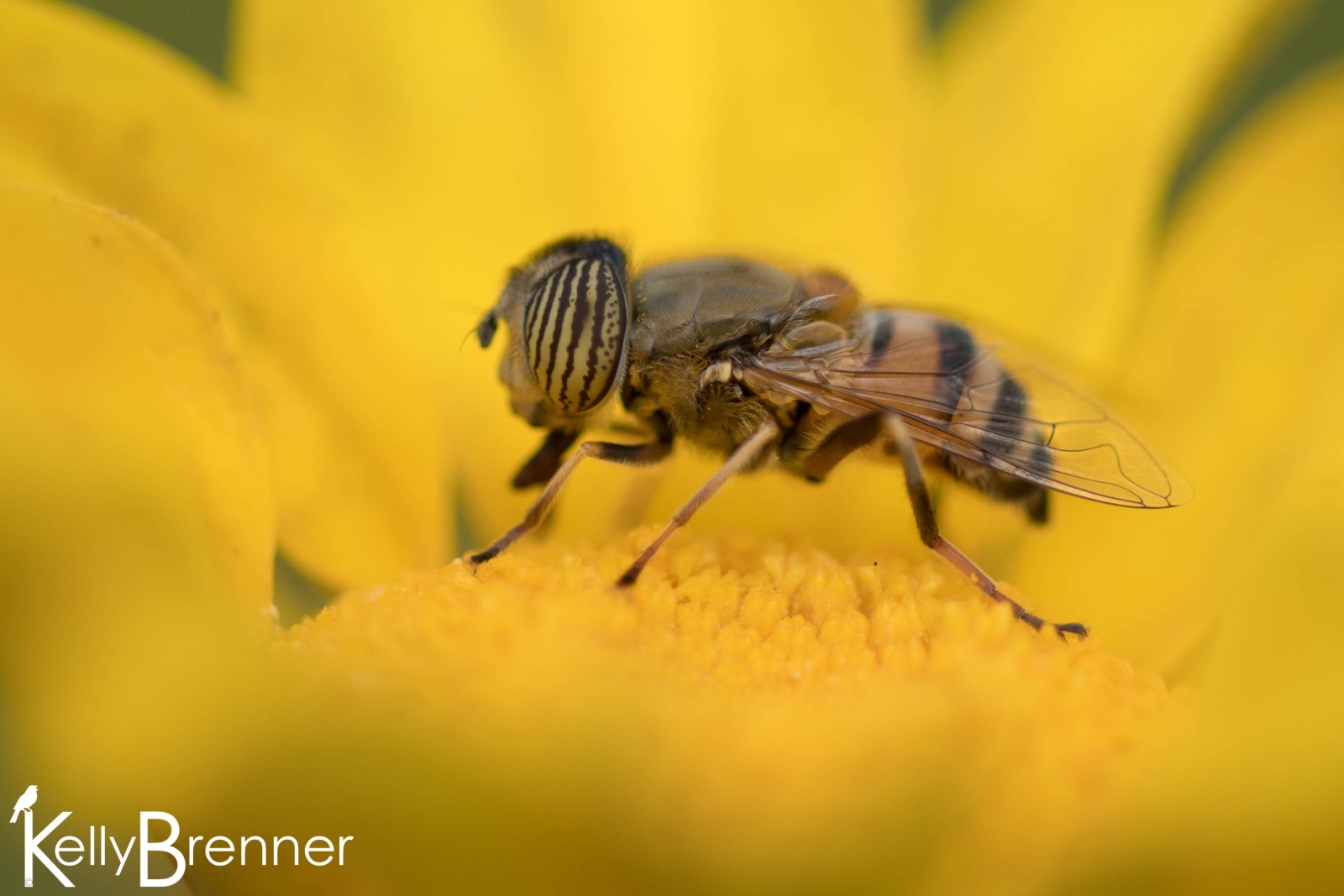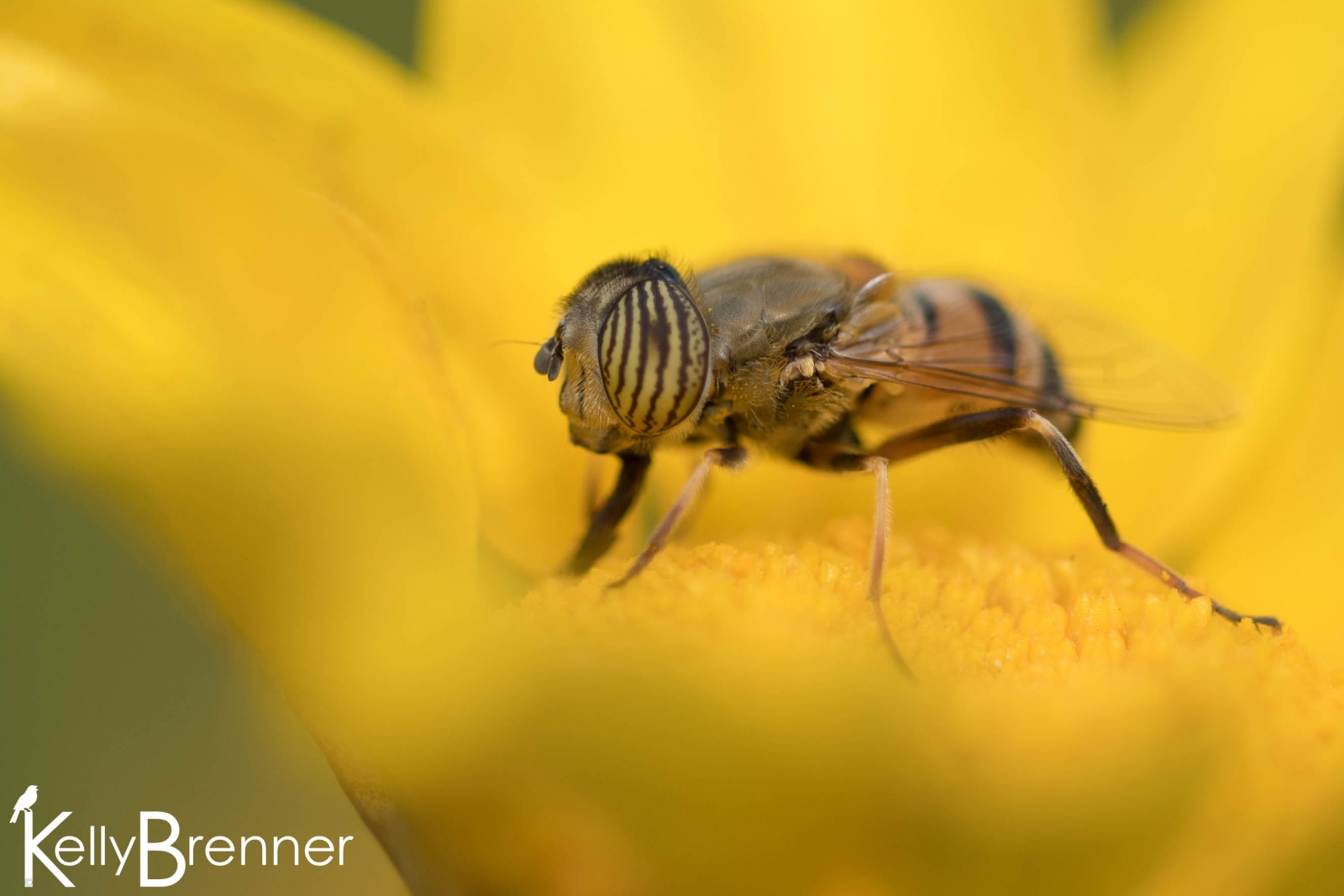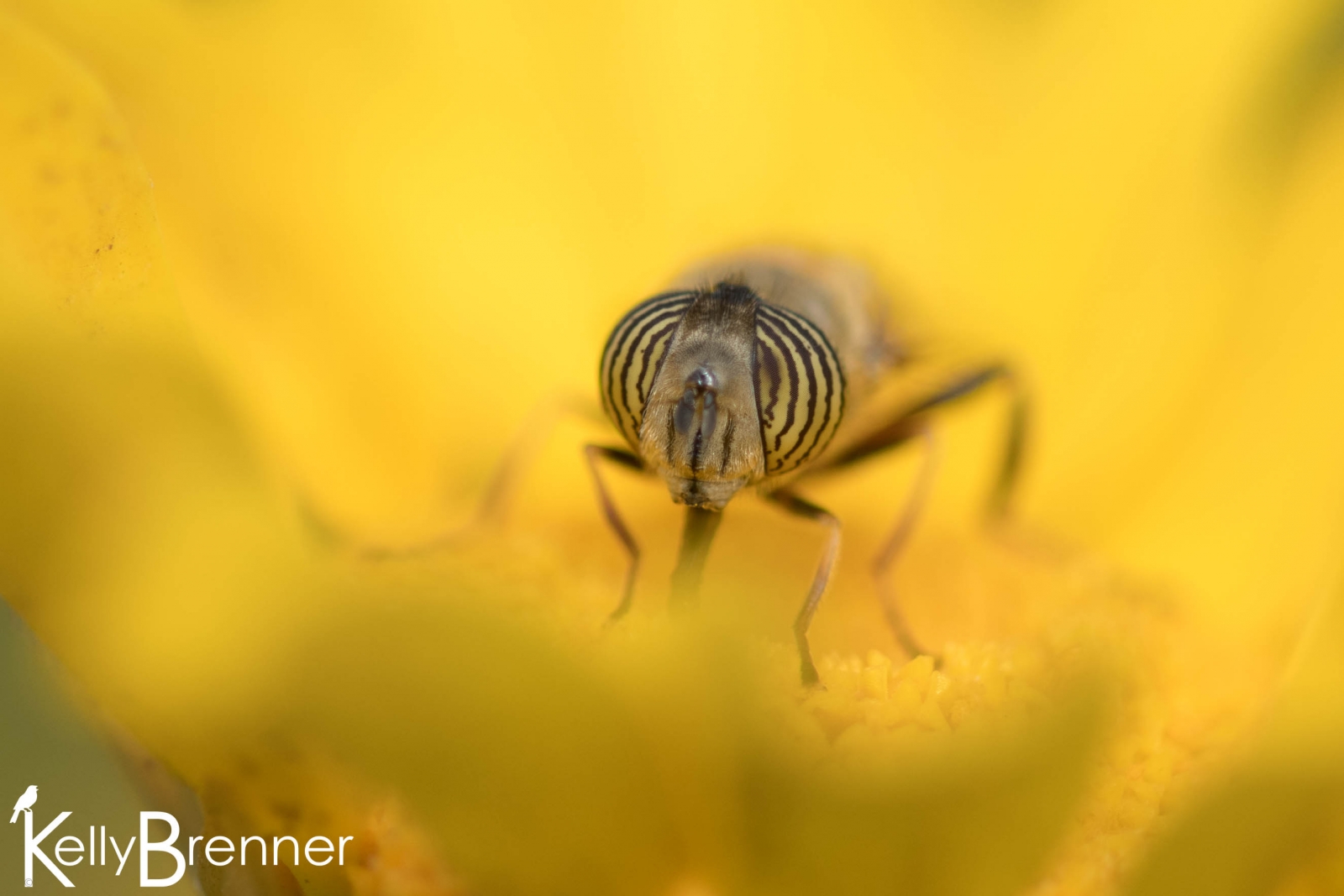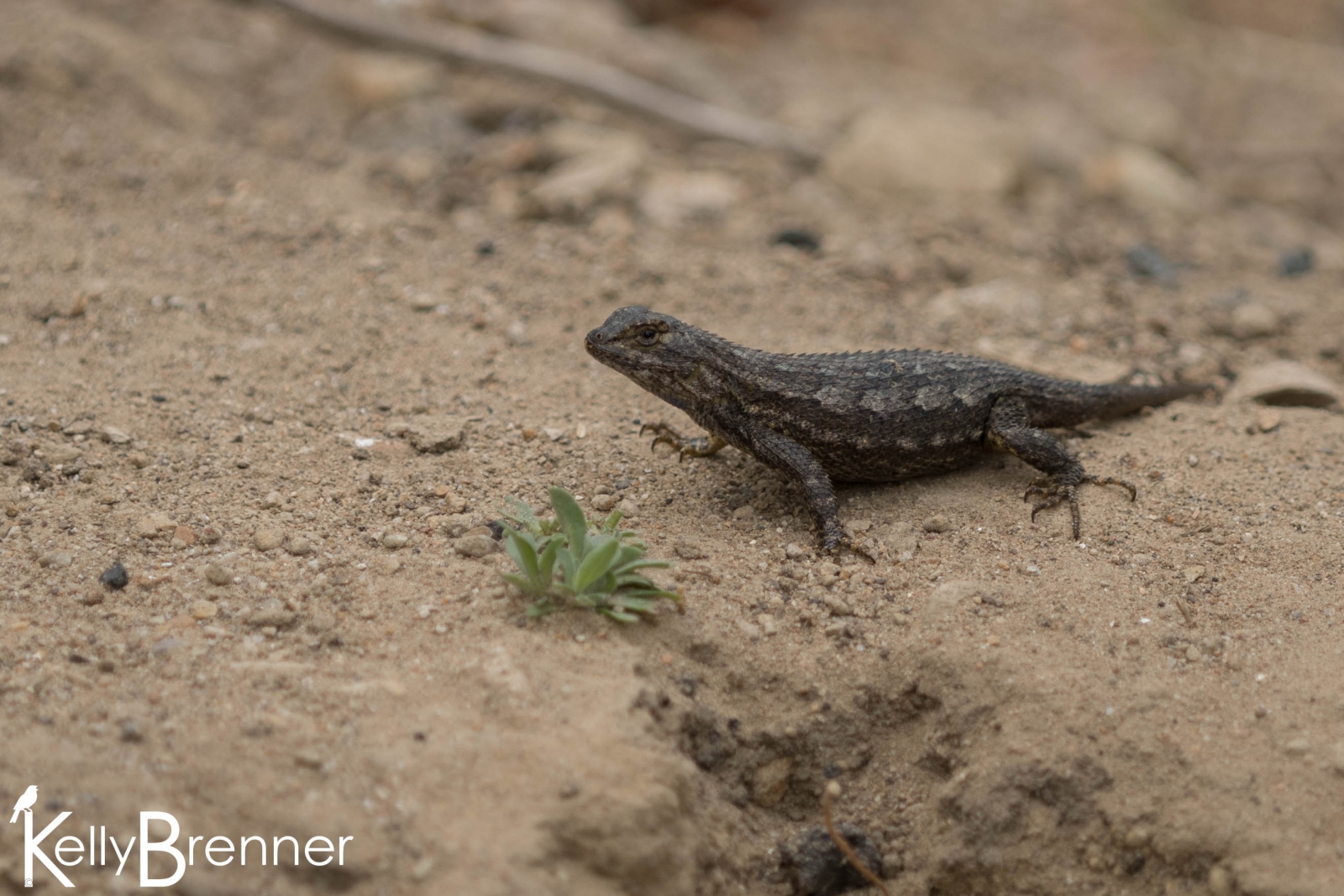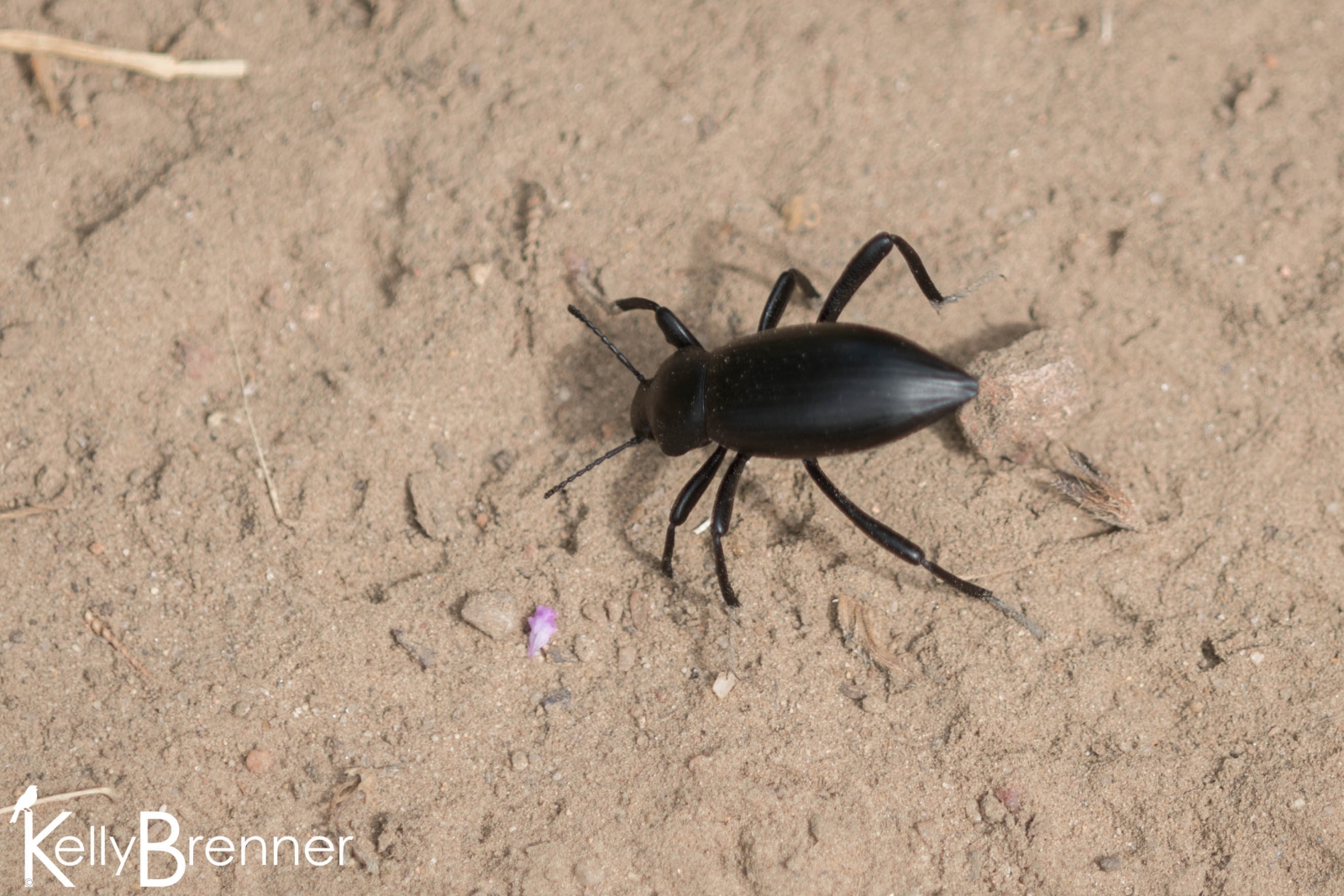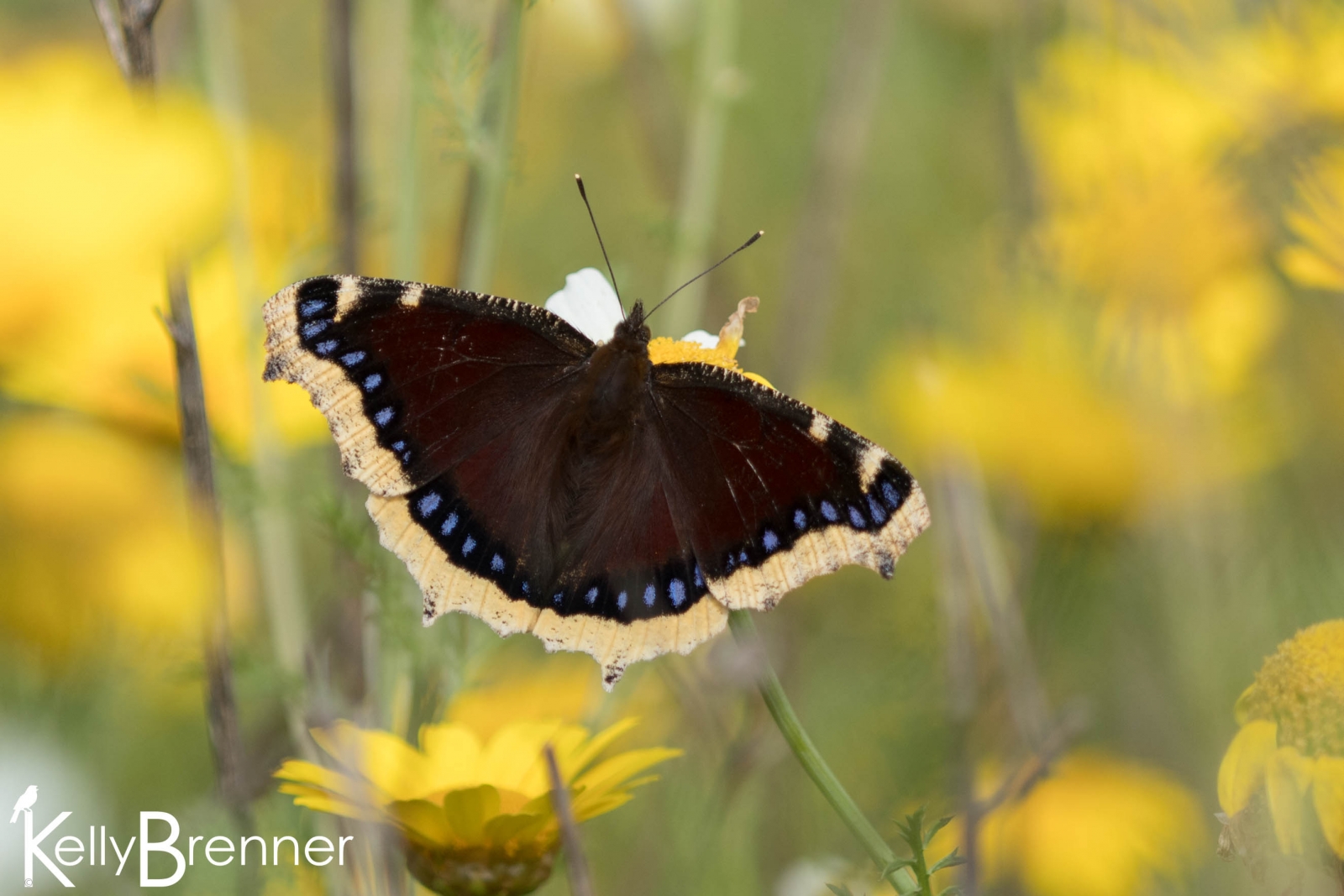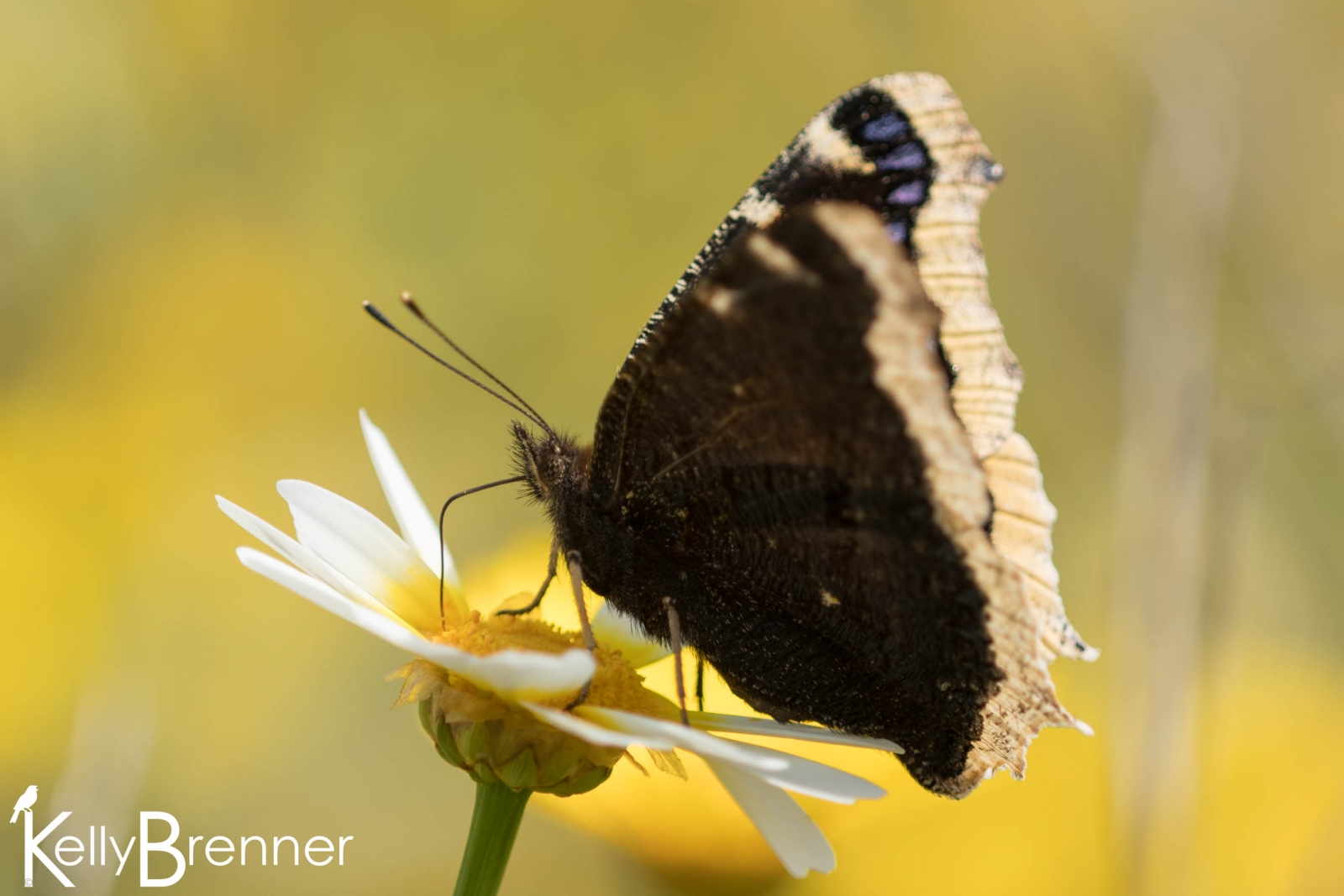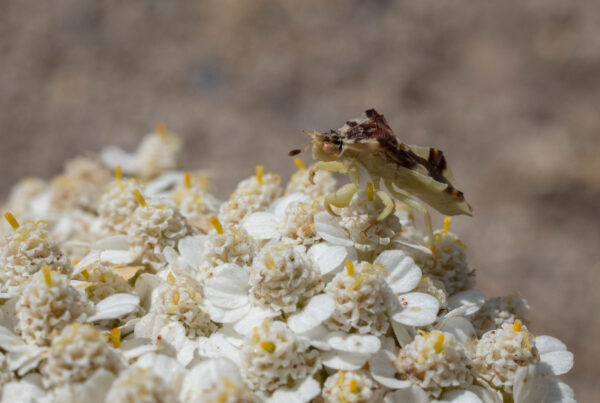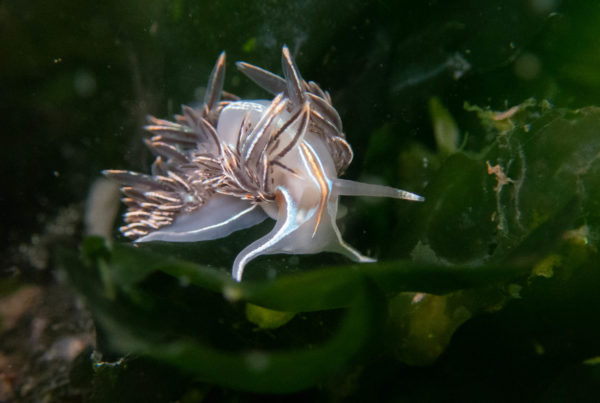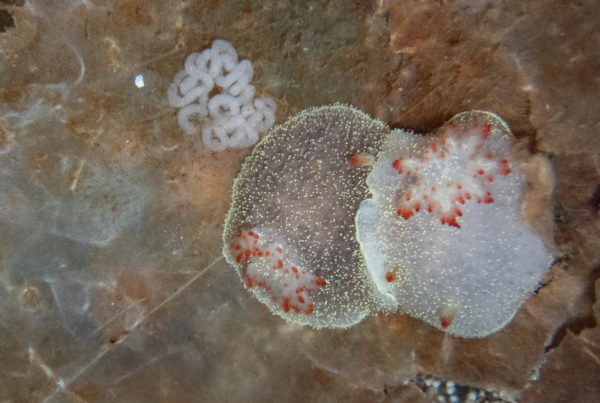To begin our second day in San Diego, I chose to visit a place I’d heard about but had not yet seen, Tecolote Canyon. The park is named tecolote which also means owl and indeed, Great-horned Owls and Barn Owls can be found there with some even nesting. The morning started as overcast, but plenty warm enough for us Seattleites. We immediately encountered a few California Towhees at the entrance area, rather dull brown birds at first glance, with with a subtle orange/red color upon closer inspection. I also found a few California Thrashers, jay-sized birds, also a dull brown, but with impressively long, curved beaks. I noticed a woodpecker on a phone pole and took a photo. Later I realized it was a Nuttall’s Woodpecker, a new bird for me. I then encountered some birds decidedly more colorful, a Black-headed Grosbeak and a Hooded Oriole and later, a Common Yellowthroat. Other birds seen included Ravens croaking and flying over us, Bushtits doing acrobatics in the flowers, Mourning Doves cooing and a Red-tailed Hawk soaring overhead.
But the real story was the flowers. Having sustained a very long drought, California was hit with several rainstorms this winter and the landscape has responded in kind. Superblooms have been in the news all over southern California for the last month and San Diego proved to have turned into a flower wonderland. Tecolote Canyon was full of tall, yellow daisies. Not a native flower, but impressive non-the-less in the sheer abundance of flowers. Not only did the flowers cover the landscape, but they were incredibly tall. In most places they were taller than our five year old and in some places they were taller than me. We encountered one local resident who told us he’d never seen them that tall in many years visiting this park. Among the daisies were other flowers I couldn’t identify, but gave some variation to the solid yellow.
We walked along the main path encountering many friendly people who noticed my camera and pointed us to different places. One kind person described where to find an owl’s nest, but we were unable to locate it, much to my utter disappointment. But I did find many insects. There were the black and orange stink bugs, several black beetles, Convergent Lady Beetles and Mourning Cloak butterflies. I also encountered several insects I didn’t recognize, like the small light green beetles gathered in the dozens on a small patch of daisies. Then there were the large, black ground beetles who looked like they were trying to stand on their heads. I found out later that they are ‘darkling beetles’ and apparently quite common in California. The reason they stand on their head is because they can discharge a stinky spray from their backsides. We must have disturbed them our paths crossed on causing them stand on their heads.
We also found more Western Fence Lizards and a Mourning Dove collecting nest materials. But perhaps my favorite find was a syrphid fly drinking nectar on a daisy. Its body looked common enough for a syrphid fly, yellow and black stripes mimicking a bee, but the eyes were something completely strange to me. The pale yellow eyes were heavily marked with brown, vertical stripes and along the back edge of the eye, brown dots. When it turned to face me the effect of those striped eyes was staggering and quite possibly one of the strangest pair of insect eyes I’ve encountered.
I sometimes find it’s strange to be a visitor to a new place. The imprint of that yellow, flower-filled landscape will be my prototype for Tecolote Canyon, despite the fact it only looks like that on very rare occasion.


